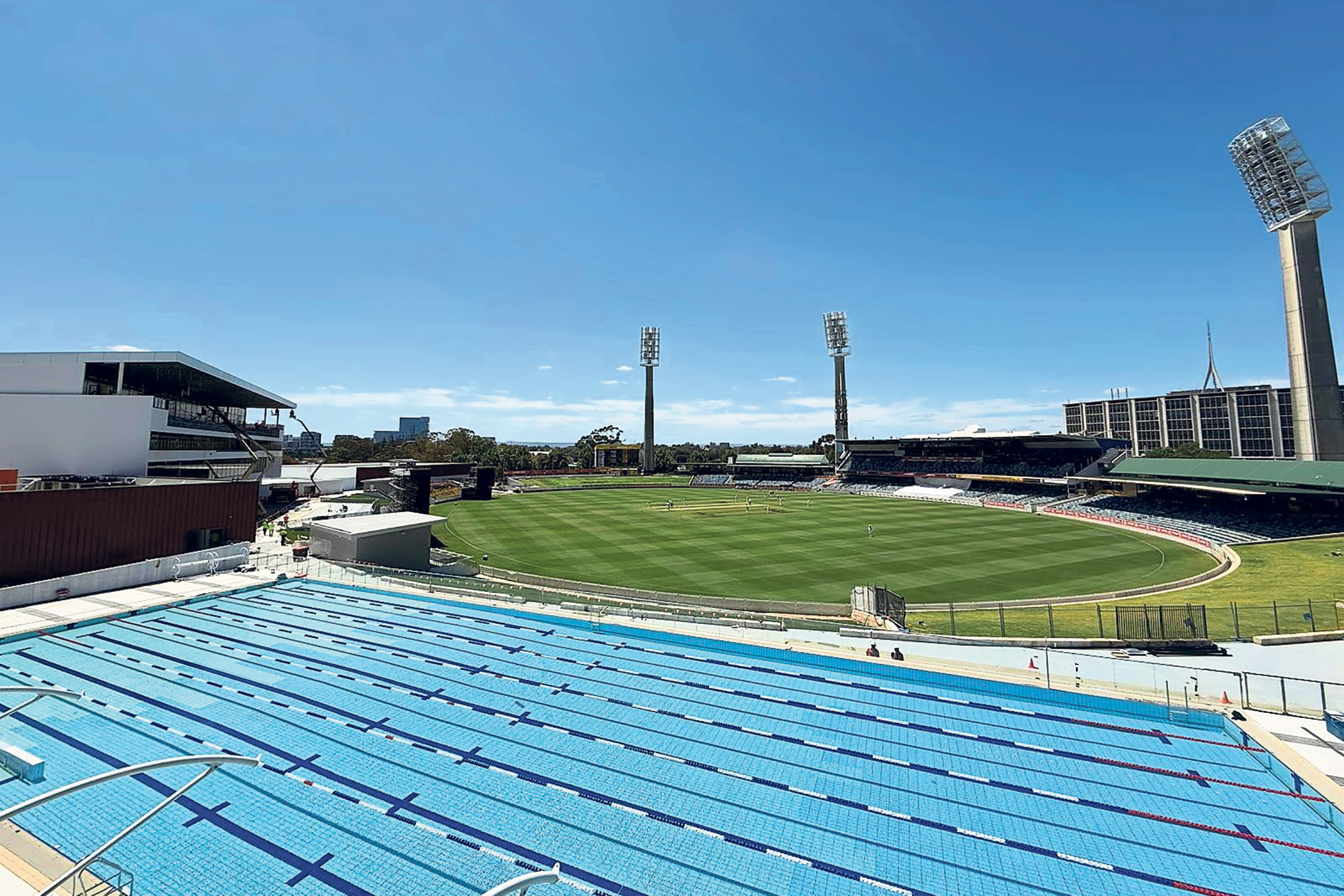“You have to be tough to watch cricket at the Waca,” says Stephen Hall, the ground historian at the iconic venue in Perth. “It is brutal.”
An afternoon at the cricket is meant to be one of life’s great pleasures, but here, with uncovered grass banks on either side of the pitch, and temperatures across the summer reaching north of 40 degrees, it can be one of its greatest challenges. In truth, it’s part of the ground’s allure.
“These trees here,” says Hall as he walks me around the venue, pointing to a row that stands behind one of the terraces at the Members’ End, “were the best seats in the house. Back in the 1970s, you’d rush in here with your lazy boy chair, your Sunday paper, and spend the day in the shade watching Dennis Lillee.”
Times are changing at the Waca. After Optus Stadium – the 60,000 seater behemoth where England will take on Australia in the first Ashes Test on Friday – was opened down the road in 2018, the Waca’s status as the cricketing centre of Western Australia was relinquished and the need to adapt became immediate. The result is water slides.
As you walk to the ground, the brutalist floodlights still loom over the city. A symbol of the hard-nosed Test cricket that was played on the world’s fastest and bounciest wicket.
As former Australian batter Justin Langer put it: “When you’re batting at the end with the sea breeze behind the bowler, you feel alive.”
But to walk into the ground for the first time as a cricket fan is a strange feeling. It no longer looks like it did in the pictures.
Half the ground remains, the Members’ End, where the Lillee-Marsh Stand is, and so too does the wonderful manual scoreboard that is three storeys high and operated by seven keen hands at any one time. But the far side is brand new – and unrecognisable.
An Olympic-sized swimming pool is located above the bank at long-on and is spectacular; the new pavilion is dead centre and incredibly impressive.
If you enter from the street through the pavilion gates, it sprawls out onto a stage-like viewing platform of the ground. And that’s because it is a stage.
This is a multi-purpose venue now. And then to the far right is the high performance centre consisting of the indoor school and players’ gym. Behind the swimming pool is a spaghetti-like maze of massive water slides. One of them is a red loop-the-loop which has a seam painted on it as if it were a cricket ball.
The works on the ground are still ongoing, with the plan being for it to be fully functional by the end of the season. Cricket is still very much the focal point, with the Western Australia Cricket Association based at the ground and domestic matches as well as women’s internationals still to be hosted here.
It’s just that, for the sake of Western Australian cricket and the local community, the place needs to be multifunctional to be profitable.
“I’m very positive about it,” says Hall, who as a man and boy of Perth and doyen of the ground, has more reason to hold on to the past than most.
“It’s really important to put yourself in a position to be ready for the future.
“It’s important to know that our core business is still cricket, but we live in a world of community, and even when we got the ground in 1889 it was all about accessibility, making sure people could use it.”
Outside of the cricket, Hall recounts tales from as far back as 1919 when Norman Brearley, a pioneer of Australian aviation, used the ground as a runway to do joy flights following World War One, when he’d been a fighter pilot.
More than 50 years later in 1976, Neil Diamond performed at the stadium, but not before he was accosted by the groundsman after attempting to ride his motorbike across the square.
“Our curator, Roy Abbott,” says Hall, “shouted out ‘Oi, you idiot!’ Had no idea who he was.
“And there was just a wonderful moment of the Australian ground curator, talking to an American, trying to explain why he couldn’t go there.”
The chief executive of WA Cricket and man in charge of delivering the redevelopment is John Stephenson, the former England batsman who joined a year ago after a similar job at Essex, having won one Test cap against Australia in 1989.
There is fortunate timing in the regeneration of the Waca. The completion of Optus Stadium roughly coincided with a 10-year partnership being launched between the Australian and Western Australian governments called the Perth City Deal.
It’s a A$1.7bn regeneration programme of the local area of which the Waca is a major beneficiary.
As Hall walks us around the ground, a Sheffield Shield match between Western Australia and Queensland is being played.
Cameron Green, the Australian golden boy, is playing for WA, while Marnus Labuschagne, who is expected to bat at No 3 for Australia in the Ashes, is part of the opposition. A few hundred people are scattered around the ground watching on.
Cricket will always be the focus at the Waca. This ground is too historic to be associated with anything else.
As part of the regeneration deal, a primary school is set to be built over the road from the new pavilion. The waterslides will be well used.
Photograph by Cameron Ponsonby
